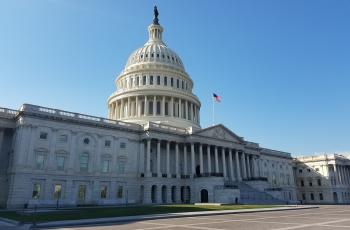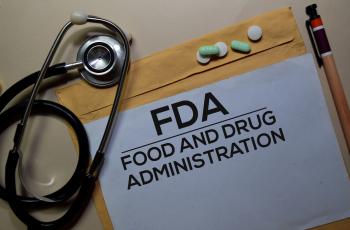Diabetes in Native Communities in the US
Diabetes disproportionately affects Native Communities in the US who experience high rates of related health complications. While several Native-led health interventions have improved diabetes prevention and treatment in these communities, more can be done to address this diabetes epidemic. Read below for insights from Dr. Valarie Blue Bird Jernigan, director of the Center for Indigenous Health Research and Policy at Oklahoma State University and member of the Choctaw Nation of Oklahoma.
People in Native communities face the highest rates of diabetes and related complications of any ethnic group in the US. The long-term impact of colonization, forced relocation, and discrimination have contributed to worse health outcomes among Native people and diabetes prevention and treatment efforts in these communities are limited. More needs to be done to address diabetes disparities among Native populations. Understanding the drivers of these disparities will help policymakers, healthcare providers, and diabetes advocates partner with Native community members in addressing the diabetes epidemic.
The severity of the diabetes epidemic in Native communities is evident when you consider the following statistics:
- Of the 5.7 million Native people in the US, nearly 15% have some form of diabetes. Within specific Native populations, some communities have much higher rates. For example, as of 2010, over 50% of the Pima Nation in Arizona had diabetes - this is the highest rate of diabetes of any population in the world.
- In 2017, Native people were 2.5 times more likely to die from diabetes complications than the average American.
- From 1996 to 2013, two-thirds of kidney failure cases in Native people were caused by diabetes.
- From 2006-2013, Native people in Western areas of the US were twice as likely to have an amputation compared to non-Hispanic whites.
While several diabetes prevention and health programs have been developed to address the diabetes epidemic in Native populations, a few of which are detailed below, more needs to be done to support these communities.
This article is not designed to be a comprehensive review, as each Native community has a unique history and experience with diabetes that should not be generalized. Instead, it is part of diaTribe’s commitment to better understand disparities in diabetes and advocate for ways to address them. Here are a few things to keep in mind:
- Research on diabetes in Native communities is limited: There is insufficient research on diabetes in Native communities and health interventions in those populations, which makes it difficult to fully understand its impact.
- Native people are not a monolith: While Native Americans are often generalized into one group, they span hundreds of tribal nations with distinct histories, experiences, systems of government, and cultural practices. As of 2020, there were 573 federally recognized and 63 state-recognized tribes. Further, 78% of Native people live outside of Native reservations, and 71% specifically live in urban areas. While we aim to avoid generalizations, we recognize that much of the data available on this topic relies on generalizations. Look herefor more information about specific tribal nations.
- Native identity encompasses more than race/ethnicity: Native identity is complex, and in addition to race/ethnicity, it also includes membership to a society that can have its own culture, government, and social structures.
Why is diabetes prevalent in Native communities?
Dr. Valarie Blue Bird Jernigan, director of the Center for Indigenous Health Research and Policy at Oklahoma State University and member of the Choctaw Nation of Oklahoma, highlighted income, food insecurity, access to exercise, and community resource funding as main drivers of the diabetes epidemic in Native populations.

“In order to really address diabetes, we have to address the relationship we have with the communities,” Jernigan said, “and we have to address the environment that our community members live in.”
Given that the factors that contribute to the prevalence of diabetes among Native Americans often vary within and between different tribal nations, the following are useful to consider:
- Colonization’s impact on Native diets – Historically, Native Americans’ experiences with genocidal policies, forced relocation, pandemics, and cultural discrimination have impacted their diets. Native communities were forced to abandon the natural resources used for their traditional diets, contributing to an increase in malnutrition, a decrease in agriculture, and an increased dependence on Western foods, increasing their risk for diabetes compared to traditional indigenous diets. Native people who consume a Western diet are 2.5 times more likely to develop diabetes than those who eat a traditional diet.
- Food insecurity – People are food insecure when they don’t have access to enough food to live an active, healthy life. One-fourth of American Indians/Alaska Natives were food insecure in 2010 and were twice as likely to be food insecure than white people. This is, in part, because Native people on tribal reservations do not have sufficient access to grocery stores and healthy food options. In 2014, only 26% of people on tribal reservations lived within a mile of a grocery store compared to 59% of the general US population. Native people living outside of tribal reservations and in more urban areas are even more likely to face food insecurity due to factors including income and limited access to traditional foods in those areas. The prevalence of food insecurity in Native communities is closely linked to their high rates of diabetes. People who are food insecure are twice as likely to have obesity and diabetes than those who are food secure. Food insecurity also makes it more difficult to manage diabetes, and those who lack access to nutritious foods face more challenges in managing their diabetes.
- Discrimination and Racism – Native people disproportionately experience racism and discrimination in the healthcare system. One 2019 survey found that 23% of Native respondents reported experiencing discrimination in US healthcare settings and another 15% avoided healthcare visits due to anticipated discrimination. These negative experiences with the US healthcare system can dissuade Native people from seeking care, potentially increasing cases of undiagnosed diabetes and making diabetes more difficult to manage. Of course, Native people also experience racism outside of healthcare settings, which has proven to affect their physical and psychological health.
What is being done to address the diabetes epidemic in Native communities?
“There had been this belief system for a very long time in Native communities that diabetes was just something that affected Native Americans badly,” Jernigan said. “That it was potentially inevitable.” This belief started to change in the last two decades, she added, as new research on diabetes prevention highlighted the value in exercise and diet.
Thanks to policy and advocacy efforts to improve diabetes prevention in Native communities, we have seen some notable improvements in the rates of diabetes and related complications in recent years. Diabetes prevalence overall in these communities decreased by 5.2% from 2013-2017. Diabetes-related deaths and hospitalizations also decreased significantly within the past two decades. These gains are largely due to improvements in healthcare and diabetes health interventions in Native populations, Jernigan said.
A few examples of these health interventions are:
- The Special Diabetes Program for Indians (SDPI) – The SDPI was founded in 1997 by Congress as a collaboration between Indian Health Services (IHS), tribal nations, and urban Native organizations. It is the largest, best coordinated effort to address obesity and diabetes in Native communities. The program provides funding for diabetes treatment and prevention for 780,000 Native people on tribal reservations, rural areas, and urban settings across 35 states. The SDPI program sites focus on several Diabetes Best Practices, including eye screenings, mental health screenings, and nutrition education. Most importantly, the program sites have autonomy in how they engage with their communities, encouraging more culturally relevant diabetes care. The SDPI program has led to improvements in the overall diabetes health of Native communities they serve, including reduced mortality, kidney disease, eye disease, hospitalizations, and a decrease in average A1C.
- The Navajo Nation Special Diabetes Project (NNSDP) – Established in 1999, the NNSDP designs and implements strategies that reduce and prevent diabetes within the Navajo Nation, the largest American Indian tribe. The project helped to establish several Wellness Centers that house youth programs, health education, exercise classes, and healthcare, among other things. The NNSDP is well funded and continues to organize local programs to prevent and reduce the prevalence of diabetes in the Navajo Nation.
- The Indian Health Service (IHS) – Started in 1955, the IHS provides free medical care and public health services for all American Indians and Alaska Natives. The IHS serves Native people in 37 states and provides care for 2.6 of 5.2 million Native people in the US. While the IHS has helped millions of Native people access healthcare, it is also severely underfunded. This limits its ability to reach all Native people and provide quality, culturally-relevant diabetes care. About 70% of Native people live in urban areas, but only 25% of them live in areas served by their Urban Indian Health Program. If the IHS were more adequately funded, it could have a greater impact in providing quality and affordable healthcare to Native communities, especially those living outside of Native reservations.
How can we move forward?
More programs are needed to help address the diabetes epidemic in Native populations. Jernigan explained that to do so requires a holistic approach to health because in Native communities, “Everything is connected and related.” Effective community engaged research and support goes beyond statistics on A1C and health complications, and focuses on the community as a whole.
She outlined some common attributes of effective intervention programs below.
- Understand that Native communities are diverse, and don’t assume that an effective health initiative in one population will be effective in another.
- Right from the start, involve the Native community in the development of the health initiative.
- Be conscious of existing biases, be intentional about reflecting on those biases and how they manifest throughout the project development, implementation, and analysis process.
- Educate yourself on the foods that are culturally important to the particular community with which you work.
- Make sure the health initiative is sustainable with funding and community involvement.
- Learn more here.
Dr. Jernigan said, “The way that Native communities have tackled this epidemic in our communities has been really hopeful.” These Native-led initiatives can improve disparities in access to healthy foods, healthcare, and housing, and ultimately bolster diabetes prevention and treatment efforts. Moving forward, addressing the diabetes epidemic in Native communities will require the coordination of Federal, state, and local resources and a greater national commitment to improving Native health outcomes. “We still have a long way to go” said Dr. Jernigan, but with the recent gains described above, diabetes no longer feels inevitable. Instead, it “feels like something that is preventable” and treatable.


